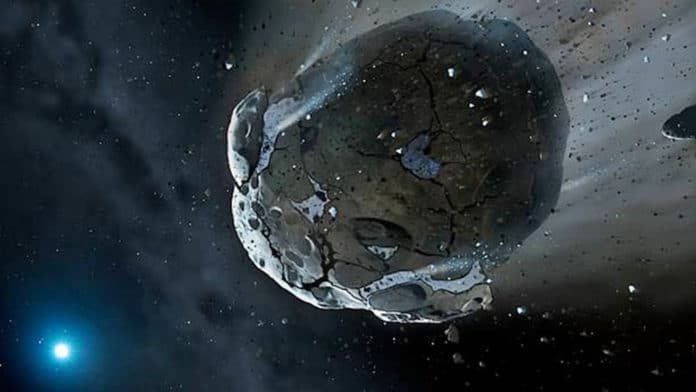Scientists led by Sunao Hasegawa from JAXA, the Japanese space agency, reported about the discovery of two red objects in the asteroid belt between Mars and Jupiter. These interloper objects are assumed to be formed beyond Neptune and somehow sneaked into their current orbits.
The objects are asteroids, dubbed as 203 Pompeja and 269 Justitia. They are loaded with organic matter, possibly including the building blocks of life on Earth.
The asteroids orbit at about 2.7 and 2.6 times the Earth-sun distance, well within the asteroid belt. 203 Pompeja, at about 70 miles across, appears to be structurally intact, whereas 269 Justitia, only 35 miles or so, is likely a fragment of a previous collision. Because of their stable circular orbits, scientists think that the objects have settled into this space long ago.
Objects in our solar system, enriched with organic material, reflect blue light, whereas objects with organic materials outside the solar system glow red. The reason behind the red surface is many organics, perhaps the building blocks of life on Earth.
Objects with such organics have a lot of ice at the surface. Based on this fact, scientists assumed that things must have formed in a very cold environment. Then the solar irradiation of the ice creates those complex organics.
203 Pompeja and 269 Justitia are special because they appear more red than anything else seen in the asteroid belt. The finding, if correct, would offer evidence for planetary migration in the early solar system.
Most of these leftover objects in the present day are known as trans-Neptunian objects and orbit in the Kuiper belt beyond Neptune. Many are red in color. 203 Pompeja and 269 Justitia both appear to match them.
Josh Emery, a planetary scientist from Northern Arizona University who was not involved in the paper, said, “People have been talking about some fraction of asteroids coming from the Kuiper belt for quite a while now. The research “definitely takes a step” toward finding evidence to support that hypothesis.”
Karin Öberg from Harvard University, who was not involved in the new study, told New York Times, “It’s an exciting discovery with implications for the origins of life.”
Journal Reference:
- Sunao Hasegawa et al. Discovery of Two TNO-like Bodies in the Asteroid Belt. DOI: 10.3847/2041-8213/ac0f05
